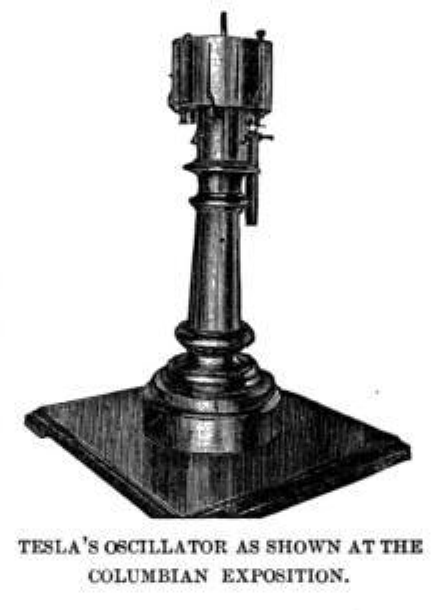Nikola Tesla, a legendary inventor with a flair for the dramatic, captured the world’s attention with his claim of creating an “earthquake machine.” Officially known as the Tesla Oscillator, this device, surrounded by myth and speculation, has intrigued both scientists and the public for decades.
In this article, we delve into the story behind Tesla’s earthquake machine, exploring what it was, how it supposedly worked, and the truth behind the tales of it causing tremors in New York City. We’ll sift through the facts and fiction surrounding this mysterious device, shedding light on one of Tesla’s lesser-known yet captivating creations and understanding why it continues to fascinate and mystify to this day.
What is Tesla’s Earthquake Machine?

The Tesla Oscillator, or Tesla’s earthquake machine, was a small mechanical device described as an electrical resonant piston oscillator. Simply put, Tesla designed it to produce vibrations. He believed that if these vibrations matched the frequency of the object it was attached to, such as a building, it could cause the object to resonate or shake very strongly. This is similar to how a singer can shatter a glass by singing a note at the glass’s resonant frequency.
Tesla’s Bold Experiment
According to popular legend, Tesla tested this device in his New York City laboratory in the late 19th century. It’s said that he attached the oscillator to a building’s framework. The machine supposedly started to resonate with the building, causing it to shake and windows to shatter. Alarmed by the intensity of the vibrations, Tesla was forced to stop the experiment by smashing the device with a hammer.
The Reality and the Myth
While this story paints a dramatic picture, the true power and effectiveness of Tesla’s earthquake machine are subjects of debate among scientists and historians. There’s no concrete evidence that Tesla’s device could actually cause earthquakes or significant structural damage. However, the concept of resonant frequency that he explored is a real and powerful principle in physics.
Modern scientific understanding suggests that while the principle of resonance can indeed cause vibrations, the idea of a small device like Tesla’s oscillator causing real earthquakes is highly implausible. The oscillator did demonstrate Tesla’s innovative approach to resonance and mechanical vibration, but its ability to cause significant seismic activity is more a part of Tesla’s legend than a scientific fact.
The Legacy of the Oscillator
The story of Tesla’s earthquake machine is more than just a tale about a potential invention. It represents Tesla’s ceaseless curiosity and his willingness to push the boundaries of science. Whether the oscillator worked as claimed or not, it highlights Tesla’s understanding of resonant frequencies, which has real applications in fields ranging from engineering to medicine.
Tesla’s earthquake machine, while shrouded in myth, stands as a fascinating example of early 20th-century innovation and exploration. It’s a testament to Tesla’s vision and his endless pursuit of knowledge, characteristics that continue to inspire and intrigue the world of science and beyond.
Who Was Nikola Tesla?
Nikola Tesla, a name that resonates with innovation and genius, was a pioneering inventor whose work laid the foundations for much of our modern electrical technology. Born in 1856 in what is now Croatia, Tesla’s life story is a remarkable blend of brilliance, ambition, and visionary thinking.
Early Life and Education
Tesla’s journey began in a small village called Smiljan, where he displayed an early talent for inventive thinking and a deep interest in the sciences. He pursued his education in engineering and physics, attending the Technical University at Graz and later studying at the University of Prague. Tesla’s academic life was marked by a voracious appetite for knowledge, setting the stage for his future endeavors.
Moving to America
In 1884, Tesla moved to the United States, a decision that would profoundly impact his career and the world of science. He arrived with little more than his brilliant mind and a letter of introduction to Thomas Edison, one of the era’s leading inventors. Tesla’s time with Edison, albeit brief and tumultuous, was a stepping stone that led him to venture out on his own.
Contributions to Electrical Engineering
Tesla’s contributions to electrical engineering are immense. He developed the alternating current (AC) electrical system, which became the standard power system of the 20th century and remains so today. His innovations include the Tesla coil, which is used in radio technology, and advancements in wireless communications, radar, and x-ray technology.
Beyond Conventional Inventions
Tesla was known not only for his practical inventions but also for his daring and sometimes outlandish ideas. He envisioned wireless power transmission, experimented with electrical lighting, and even claimed to have developed a ‘death beam’ weapon. His work on the Tesla Oscillator, or the so-called ‘earthquake machine,’ adds to his legacy as a scientist who constantly pushed the boundaries of possibility.
Tesla’s Legacy
Despite facing financial struggles and lack of recognition during his lifetime, Tesla’s work has gained immense respect and acknowledgment posthumously. Today, he is celebrated as a visionary and a true innovator who transformed the landscape of electrical engineering.
Conclusion
Tesla’s earthquake machine remains one of the most intriguing and enigmatic inventions in the annals of scientific history. While the truth behind this device’s capabilities is shrouded in myth and speculation, its existence underscores Nikola Tesla’s extraordinary vision and his relentless pursuit of innovation. Tesla’s work on the oscillator highlights his deep understanding of resonant frequencies and mechanical vibrations, concepts that have significant implications in various scientific fields.
Though there is no concrete evidence to support the more sensational claims about the machine’s power, the story of Tesla’s earthquake machine continues to captivate the imagination. It serves as a vivid example of how Tesla’s ideas often blur the lines between science and science fiction. More than just an invention, the oscillator is a testament to Tesla’s legacy as a pioneering inventor whose ideas were far ahead of his time.